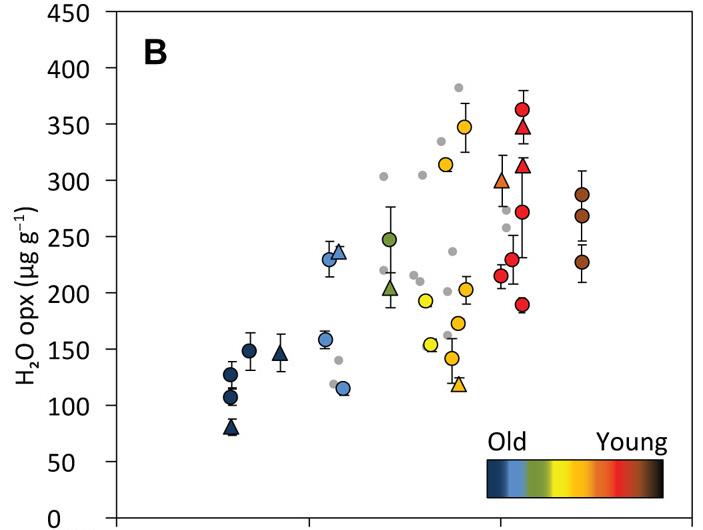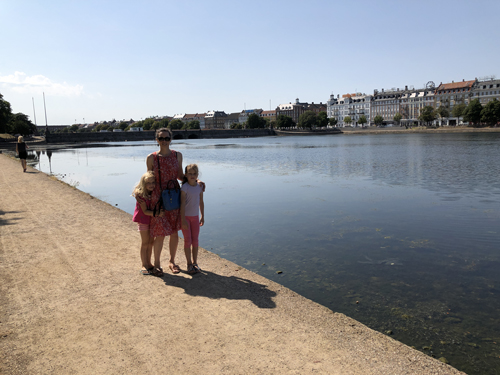News
I am hiring a PhD student starting Fall 2024 at the CRPG laboratory in Nancy, France. Potential opportunities to work with my awesome WHOI colleagues too. More details here:
Molly Anderson is a new NSF postdoctoral fellow at WHOI, and will work on the spatial and temporal evolution of volatiles in the oceanic mantle. Welcome Molly!
Namitha Kumar is back and is starting a PhD in the MIT-WHOI Joint Program. Welcome back!!
Congratulations Dr. Codillo on a very successful Ph.D. defense! On to a prestigious postdoc scholarship at Carnegie now!
This year, Postodoctoral investigator Rellie Goddard, Andy Cross, and myself have the pleasure to host undergraduate student Namitha Kumar from the University of Michigan as part of the prestigious SSF program at WHOI. Namitha will work on combining geochemical analyses by LA-ICP-MS and electron microprobe with rheological measurements by EBSD on gabbros from the South West Indian Ridge to investigate the strength of the lower oceanic crust. Welcome Namitha!
Magmatic volatiles (for example, water) are abundant in arc melts and exert fundamental controls on magma evolution, eruption dynamics and the formation of economic ore deposits. To constrain the H2O content of arc magmas, most studies have relied on measuring extrusive products and mineral-hosted melt inclusions. However, these methods have inherent limitations that obfuscate the full range of H2O in arc magmas. Here, we report secondary-ion mass spectrometry measurements of volatile (H2O, F, P, S, Cl) abundances in lower-crustal cumulate minerals from the Kohistan palaeo-arc (northwestern Pakistan) and determine H2O abundances of melts from which the cumulates crystallized. Pyroxenes retained magmatic H2O abundances and record damp (less than 1 wt% H2O) to hydrous (up to 10 wt% H2O) primitive melts. Subsequent crystal fractionation led to formation of super-hydrous melts with approximately 12–20 wt% H2O, predicted petrologically yet virtually absent from the melt-inclusion record. Porphyry copper deposits are probably a natural eventuality of fluid exsolution from super-hydrous melts, corroborating a growing body of evidence.
See more press releases here:
Arc volcanoes are wetter than previously thought, with scientific and economic implications
https://news.mit.edu/2022/magma-tectonic-collision-zones-wetter-052
The deadline for application to the WHOI postdoctoral program is Oct. 15th 2021, and the deadline for application to the MIT/WHOI Joint Program (PhD) is December 15th. Contact me if you would like to work in The Mantle Rocks lab.
More details on the application process below.

The large range of H2O contents recorded in minerals from exhumed mantle rocks has been challenging to interpret, as it often records a combination of melting, metasomatism, and diffusional processes in spatially isolated samples. Here, we determine the temporal variations of H2O contents in pyroxenes from a 24-Ma time series of abyssal peridotites exposed along the Vema fracture zone (Atlantic Ocean). The H2O contents of pyroxenes correlate with both crustal ages and pyroxene chemistry and increase toward younger and more refractory peridotites. These variations are inconsistent with residual values after melting and opposite to trends often observed in mantle xenoliths. Postmelting hydrogen enrichment occurred by ionic diffusion during cryptic metasomatism of peridotite residues by low-degree, volatile-rich melts and was particularly effective in the most depleted peridotites. The presence of hydrous melts under ridges leads to widespread hydrogen incorporation in the oceanic lithosphere, likely lowering mantle viscosity compared to dry models.

Ben Urann has graduated from the MIT/WHOI Joint Program (2015-2021)! Congratulations for a great job Ben!

I have obtained a visiting Scholar award to visit the IGN, University of Copenhagen (Denmark) for some months. Thank you to both WHOI and IGN for support.
